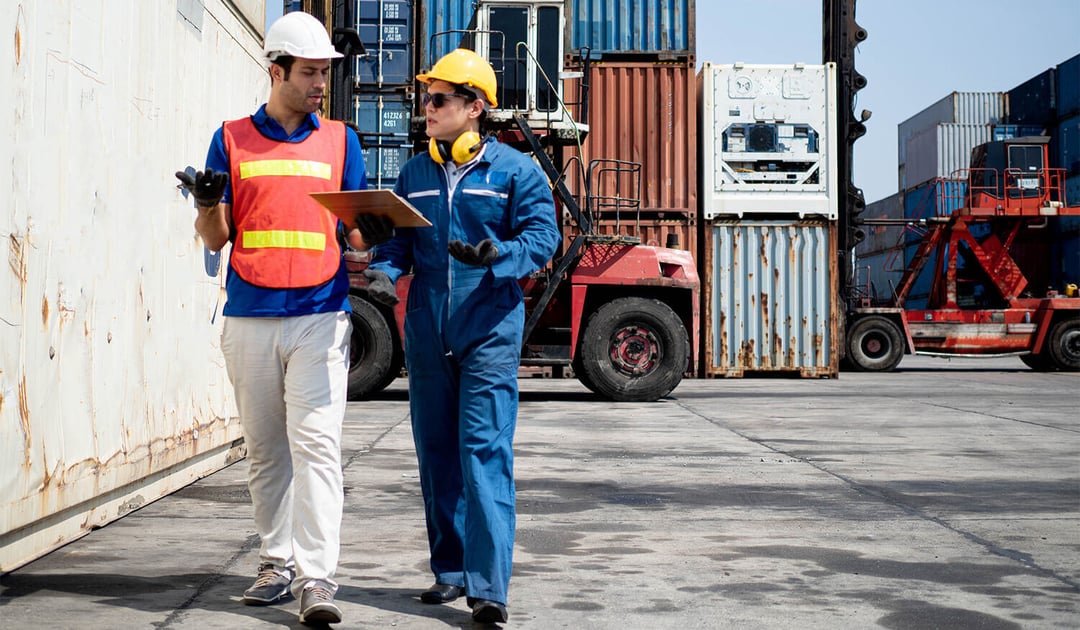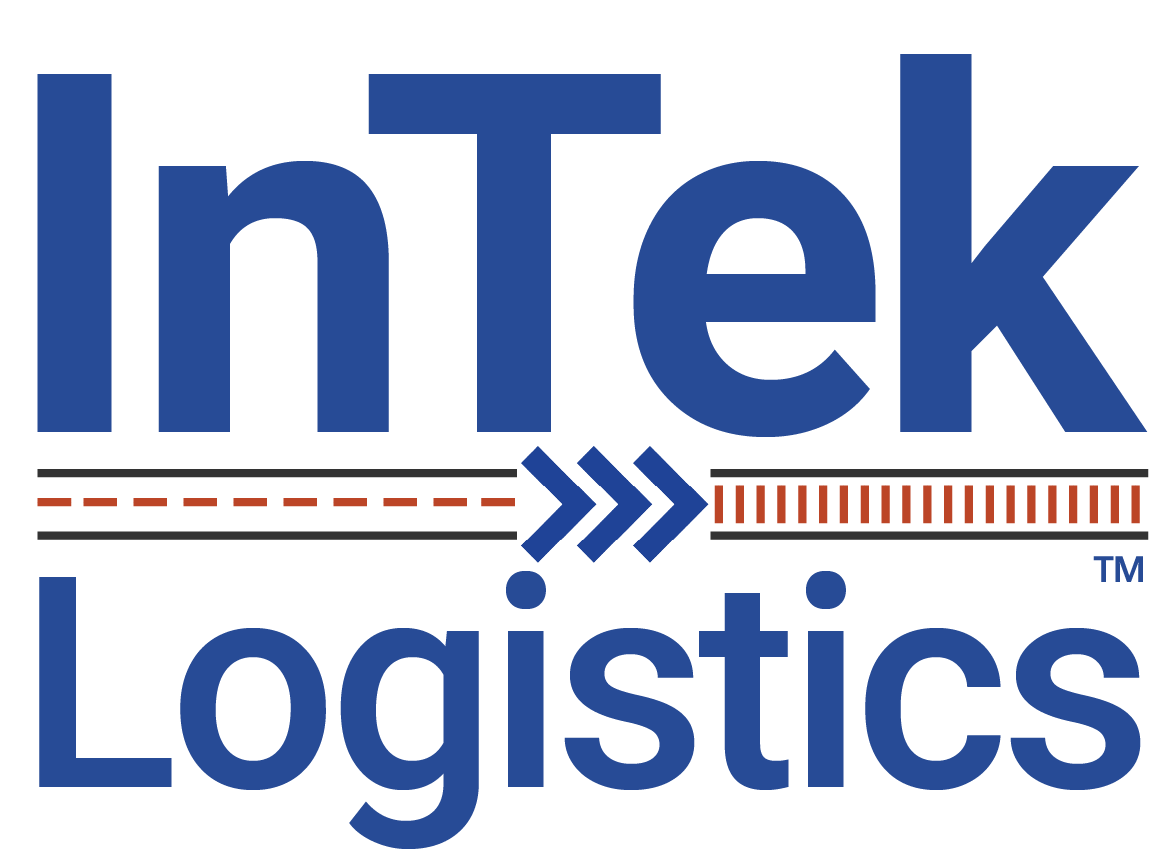
Shipping freight across the U.S.-Mexico border is a crucial component of North American trade, but it involves complex regulatory requirements that shippers must navigate with the help of customs brokers on both sides. Beyond that requirement, intermodal offers the best option for shipments to have a smoother cross-border journey.
In this article, we’ll go over:
- Why both a U.S. customs broker and a Mexican customs broker are required.
- The step-by-step process of clearing cross-border shipments.
- Key differences between truckload and intermodal shipments.
- How shippers can avoid delays by properly managing customs clearance.
Why Do Shippers Need Two Customs Brokers for Cross-Border Shipments?
A U.S. customs broker and a Mexican customs broker are required because each country has separate laws and procedures for import/export clearance. Each broker plays a distinct role in the process:
The Role of a U.S. Customs Broker
A U.S. customs broker manages the export process and ensures the shipment legally leaves the United States. Their responsibilities include:
- Filing the Electronic Export Information (EEI) through AESDirect (if required for shipments over $2,500 in value or subject to export controls).
- Ensuring compliance with U.S. export regulations to prevent delays or fines.
- Coordinating with the U.S. carrier and logistics partners to ensure all required documentation is in place before the freight reaches the border.
The Role of a Mexican Customs Broker
A Mexican customs broker is responsible for ensuring the shipment legally enters Mexico and complies with Mexican import regulations. Their responsibilities include:
- Filing the Pedimento, the official Mexican import declaration.
- Ensuring compliance with Mexican customs laws as outlined by SAT (Servicio de Administración Tributaria).
- Calculating and managing the payment of duties and taxes, if applicable.
- Coordinating with Mexican customs authorities to obtain clearance.
- Handling any required inspections before releasing the shipment for inland delivery.
Can a Single Customs Broker Handle Both Sides?
Some large multinational customs brokerage firms offer dual services, meaning they have licensed brokers in both the United States and Mexico.
However, in most cases, shippers work with two separate brokers due to:
🔹 Regulatory differences—Each country has its own customs laws and requirements.
🔹 Specialized expertise—Mexican brokers have deeper knowledge of Mexico’s import laws, tariffs, and customs procedures.
🔹 Required licensing—Only Mexican-licensed customs brokers can file the Pedimento and process duties with SAT.
While working with a single customs firm may streamline communication, shippers should verify that both U.S. and Mexican customs brokers are fully licensed and experienced with their specific commodity type.
What Happens Without a Mexican Customs Broker?
If a shipper does not have a Mexican customs broker, their shipment cannot legally enter Mexico.
This is because only a licensed Mexican customs broker can:
- File the Pedimento, which is required for all imports.
- Pay applicable import duties and taxes to Mexican authorities.
- Facilitate customs inspections and resolve any compliance issues.
Without a Mexican customs broker:
- The shipment will be stuck at the border.
- The carrier will be unable to deliver the goods into Mexico.
- The shipper will incur storage fees and potential penalties.
To avoid costly delays, shippers should arrange for a Mexican customs broker well before the shipment reaches the border.
How Does the Customs Clearance Process Work for U.S.-Mexico Shipments?
Step 1: Documentation Preparation
Regardless of shipping method, all U.S.-Mexico shipments require:
- Commercial Invoice – Details the value, origin, and contents of the shipment.
- Bill of Lading (BOL) – Serves as the transport document for the carrier.
- Packing List – Lists all items inside the shipment.
- Certificate of Origin (if applicable) – Needed for USMCA benefits (formerly NAFTA).
- Import/Export Permits (if required for certain commodities).
Both the U.S. and Mexican customs brokers must review and approve these documents before the shipment departs.
Step 2: Export Clearance in the U.S.
- The U.S. customs broker files export declarations as needed.
- The shipment moves to a designated border crossing (e.g., Laredo, TX; El Paso, TX).
Step 3: Customs Clearance at the U.S.-Mexico Border
- The Mexican customs broker files the Pedimento for import clearance.
- Duties and taxes are paid before release.
- Mexican authorities may conduct random customs inspections.
Step 4: Final Delivery into Mexico
- Once cleared, the shipment moves inland via truck or rail.
- The consignee in Mexico takes final possession of the goods.
Considerations for Intermodal vs. Truckload Shipments
Truckload Shipments
Truckload shipments must:
- Have both U.S. and Mexican customs brokers in place before the truck reaches the border.
- Often require transloading—where freight is transferred from a U.S. truck to a Mexican carrier at the border.
- Face potential delays due to truck congestion at border crossings.
Intermodal Shipments
Intermodal shipments benefit from:
- Railroad-preferred customs brokers, which streamline clearance.
- Seamless steel-wheeled interchange between U.S. and Mexican railroads—avoiding truck congestion.
- Lower risk of cargo theft, since containers remain sealed from origin to destination.
Final Verdict: Do You Need Both Brokers?
Yes—shippers must work with both a U.S. customs broker and a Mexican customs broker to ensure smooth border clearance.
🔹 U.S. broker → Handles export paperwork and compliance.
🔹 Mexican broker → Manages import clearance, Pedimento filing, and duties.
By properly coordinating with both brokers, shippers can avoid costly delays and keep freight moving efficiently across the U.S.-Mexico border.
Key Resources on Cross-Border Shipping Customs Clearance
Government & Regulatory Links
- U.S. Customs and Border Protection (CBP) – Trade Information
Offers details on U.S. export regulations, documentation, and compliance. - U.S. Census Bureau – AESDirect Filing & EEI Requirements
Provides guidelines on Electronic Export Information (EEI) filing via AESDirect. - Mexico’s SAT (Servicio de Administración Tributaria) – Customs and Tax Regulations
Outlines Mexican import requirements, Pedimento filing, and duties/taxes.
Intermodal & Cross-Border Shipping Resources
- Union Pacific – Mexico Intermodal Services
Covers Union Pacific’s intermodal services and rail interchanges with Mexico. - Kansas City Southern de México (KCSM) – Cross-Border Rail Services
Explains how KCSM facilitates intermodal rail shipping across the border. - Association of American Railroads (AAR) – Intermodal Shipping Benefits
Discusses how rail intermodal shipping improves efficiency and reduces costs.
USMCA & Trade Agreement Links
- United States-Mexico-Canada Agreement (USMCA) – Official Resources
Explains tariff benefits and customs rules for cross-border trade. - International Trade Administration (ITA) – Mexico Trade Resources
Provides import/export guides and customs regulations for Mexico.
Avoid Customs Delays with the Right Brokers
- Cross-border shipping requires two brokers—one in the U.S. and one in Mexico.
- Shippers should establish customs brokerage partnerships before shipping to avoid delays.
- Intermodal shipping offers an efficient alternative with pre-cleared customs processing.
By working with trusted customs brokers and logistics partners, shippers can ensure a seamless cross-border shipping process.
Would you like additional guidance on choosing the right customs broker for your shipments? Contact us today!
For more insights on intermodal logistics, subscribe to the Intermodal Logistics Podcast. Whether you're a seasoned logistics professional or new to the industry, understanding the intricacies of chassis management will enhance your ability to navigate the ever-evolving world of intermodal shipping.
Our team is here to guide you through the benefits and help you make the best choice for your logistics needs. We'll work with you on flexible solutions that fit you best. For more information about InTek, or logistics and supply chain issues in general, check out our Freight Guides.
Get Updates
Featured Articles
Categories
- Freight & Shipping Costs (55)
- Freight Broker (66)
- Freight Forwarder (3)
- Intermodal Transportation (195)
- International & Cross Border Logistics (43)
- Logistics & Supply Chain (435)
- Logistics Service Provider (79)
- LTL (39)
- Managed TMS (49)
- News (40)
- Supply Chain Sustainability (12)
- Transportation Management System (37)
- Truckload (123)
- Warehousing & Distribution (51)



